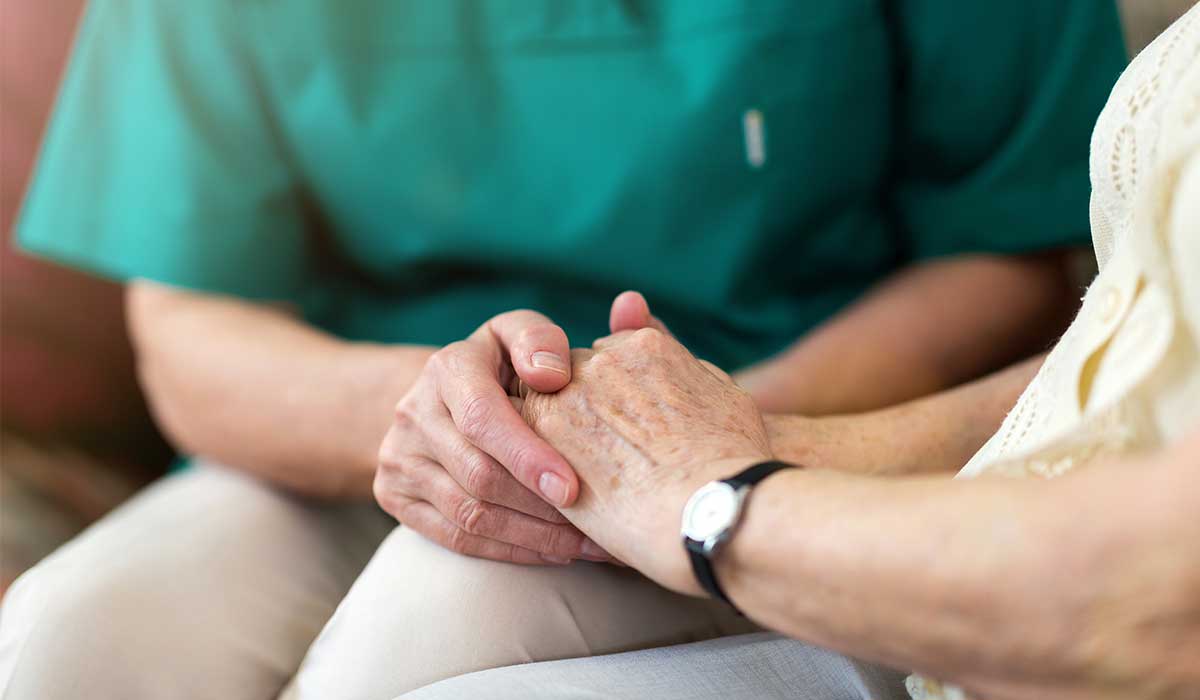Sometimes, after getting a cancer-free diagnosis when you think your battle is over, you’re stuck dealing with a new challenge: painful swelling caused by lymphedema.
Lymphedema is an uncomfortable condition that often affects patients when lymph nodes are removed or damaged during or after their cancer treatment. It most commonly affects arms and legs, but lymphedema can also develop in other parts of your body.
Keep reading to learn more about how to treat lymphedema.

Types of lymphedema
There are two types of lymphedema: primary and secondary.
- Primary lymphedema: This rare form of the disease is inherited. Caused by lymph nodes that form abnormally, this type of serious condition begins during infancy.
- Secondary lymphedema: This is the more common type of lymphedema, and it can develop in anyone at any age.
Although some patients develop secondary lymphedema due to health conditions (such as obesity, kidney disease, or congestive heart failure), infection, or trauma, this post focuses on secondary lymphedema that begins as a result of cancer, cancer surgeries, and radiation treatment. In the United States alone, secondary lymphedema affects around 1 in 1,000 people, especially those who have gotten breast cancer treatment.
Symptoms of lymphedema
Signs that you might have lymphedema include:
- Puffiness and swelling, especially in your arms, legs, or any parts of your body that might be at risk (in some cases, one arm or leg may appear inexplicably to be a slightly different size)
- Sensations of fullness or heaviness that cause discomfort
- Jewelry or clothing starts to feel tight
- Burning and itching feelings
- Joints feel inflexible or tight
- Skin seems to be noticeably thickening
If you start seeing signs of lymphedema, early treatment can make a difference. Visit your healthcare provider right away if you notice any changes in your body while you have cancer or after cancer surgery or radiation treatment.
They will check for swelling and—in some cases—do non-invasive imaging testing before diagnosing you with secondary lymphedema.
Treating lymphedema
Right now, there’s no cure for lymphedema, nor is there a way for doctors to predict which patients will develop this disorder). It’s very unpredictable condition; however, your healthcare provider can work with you to create a lymphedema treatment plan—for reducing pain and risks associated with the condition—so that you can get back to living your life to the fullest.
Common therapies and treatments for managing lymphedema
- Using compression garments (sleeves and stockings), compression bandaging, and home compression pumps
- Complete decongestive therapy
- Manual lymphatic drainage massage
- Non-strenuous/low-impact aerobic stretching and exercise
You can also control swelling caused by lymphedema by eating a healthy diet. Nutritious foods that are low-fat, low in sodium, high-fiber, and minimally processed can help you reach and maintain your ideal weight.
Watching what you eat not only helps reduce symptoms of lymphedema, but it can make you feel healthier overall.
Lymphedema therapy and management services at Logansport Memorial Hospital
Logansport Memorial Hospital’s experienced physical therapy team helps patients develop, maintain, and restore maximum movement and function when those abilities have been threatened by aging, injury, environmental factors, or diseases like lymphedema.
To learn more about our physical therapy services or make an appointment with a certified lymphedema therapist close-to-home, right here in north-central Indiana, call (574) 753-1380.




